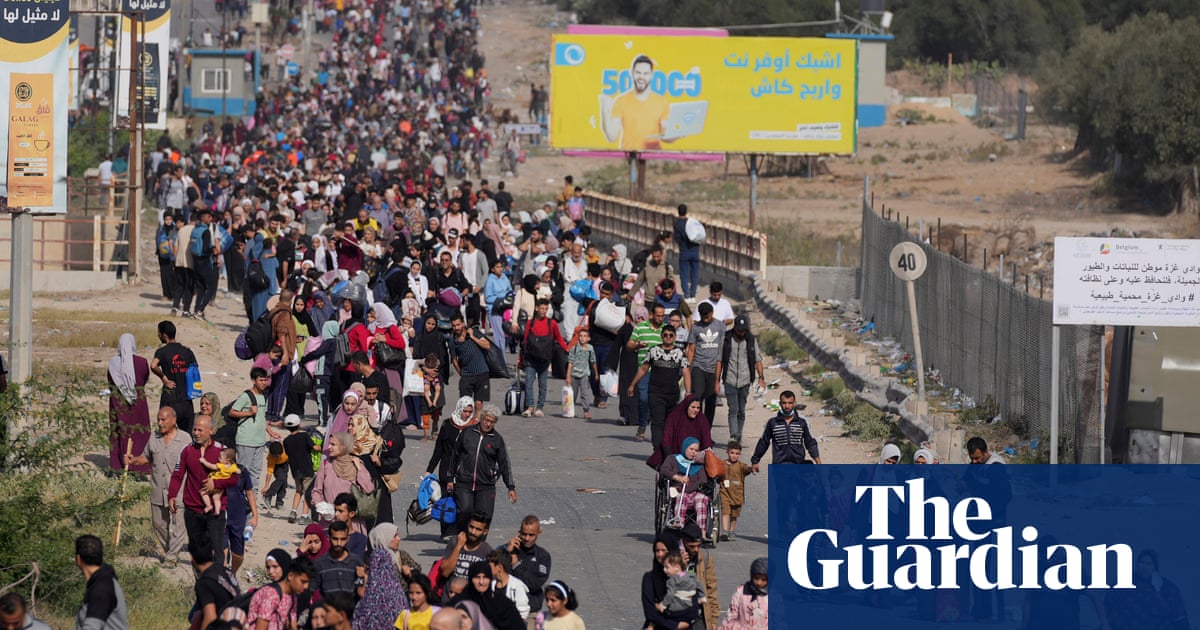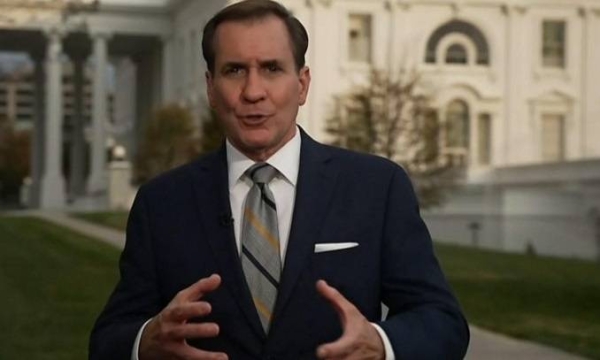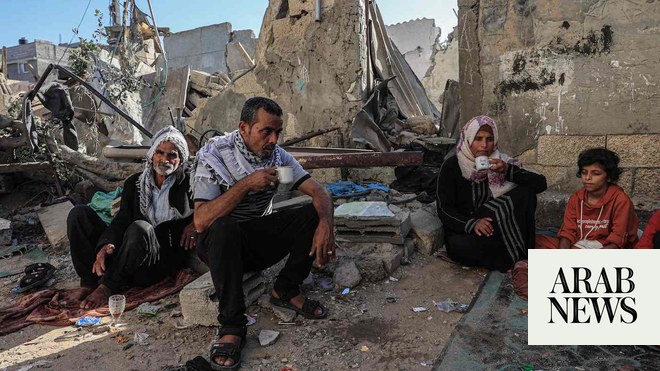
Thousands of Palestinians continued to flee south from northern Gaza on Thursday as the White House announced that Israel would begin to implement four-hour “humanitarian pauses” in parts of the area to allow people to leave.
The US national security spokesperson, John Kirby, said the pauses would allow people to pass along two humanitarian corridors, which he described as “a significant first step”.
Israel said it had allowed movement along the Salah al-Din road – the main highway that runs along the Gaza Strip – for the fifth consecutive day.
Images of the mass exodus showed many people evacuating on foot with their belongings tied to their backs, with some pushing wheelchairs and prams.
“We saw decomposed bodies, people from civilian cars, civilians like us, not military cars or resistance men,” Khaled Abu Issa told Reuters after crossing into the south with his family at Wadi Gaza.
Israeli forces continued to fight Hamas militants in the north of the Gaza Strip on Thursday and inched their way closer to two big hospitals, as the plight of civilians in the besieged Palestinian territory worsened.
A surgeon at al-Shifa hospital, the territory’s largest, said he could hear gun battles from the hospital on Thursday.
The Israel Defence Forces announced on Thursday that their troops had been operating in the centre of Gaza City, where they said Hamas’s military quarter was located, near al-Shifa hospital.
The IDF said the area was “the heart of intelligence and operational activities” where Hamas had planned the 7 October attacks, in which 1,400 people in Israel were killed. It said its personnel had killed or captured about 50 Hamas fighters during “intense battles”.
Many Palestinians have been seeking refuge at al-Shifa, and also al-Quds hospital, where ground battles raged on Thursday and Israeli airstrikes rained down.
The Israeli military has said Hamas’s main command centre is in and under the Shifa complex and that senior leaders of the group are hiding there, using it as a shield. Hamas and hospital staff have denied this, saying the IDF is using the allegation as a pretext to strike the hospital.
Dr Ghassan Abu-Sittah, a London-based plastic and reconstructive surgeon, said he had gone to al-Shifa on Thursday and that 60% of its operating rooms had been forced to close to due to a lack of fuel to run generators.
“But the problem in Shifa is that you can now hear the gun battles of the ground forces close to Shifa. You can actually hear it, there’s machine gunfire and heavy machine gunfire and tank fire,” he said.
Abu-Sittah, who has also been working at Gaza’s al-Ahli Arab hospital, said the grounds of al-Shifa had become a refugee camp, with thousands of people sheltering there in tents. He described the advancing ground operation as “perplexing and bizarre” given the civilians seeking refuge, including inside hospital rooms.
“On the one hand, there are even more internally displaced [people] flocking to Shifa. I mean, there’s barely room for the ambulances to get into the emergency department, there are so many people shielding there,” he said.
“One of the nastiest things I’ve seen is that they’ve had to bring in these refrigerated trucks to act as extra morgues, and so you have these huge refrigerated trucks [outside]. I think what happens is during the day people are being dug out of the rubble, continuously, and they’re brought into that morgue because the other morgues, I suppose, are full.
“And then, in all of this kind of horrible, surreal atmosphere of the internally displaced and extra morgues, you can hear the crackle of machine gunfire – it’s not the aerial bombing, it’s ground forces.”
Al-Shifa’s director, Mohammed Abu Selmia, told the Associated Press that the hospital was overwhelmed with daily waves of wounded people from airstrikes, while medical supplies had been running low and electricity shut off in large sections of the facility.
“The conditions here are disastrous in every sense of the word,” he said. “We’re short on medicine and equipment, and the doctors and nurses are exhausted … We’re unable to do much for the patients.”
Footage posted on social media on Thursday afternoon appeared to show bombardment in the area surrounding the Indonesian hospital in Beit Lahia, in the northern Gaza Strip. Al Jazeera said the Palestinian interior ministry reported “a number of injuries” among the thousands of displaced people sheltering there.
The UN Palestinian refugee agency, UNRWA, said it was seeking $481m (£393m) in aid for Gaza in response to “unprecedented devastation” there and growing needs in the occupied West Bank.
“One month into a tight siege and a brutal war, the humanitarian needs in the Gaza Strip are colossal. They grow by the hour,” said the UNRWA commissioner general, Philippe Lazzarini.
At least 10,812 Palestinians, including 4,412 children, have been killed in Israeli strikes on Gaza since 7 October, the health ministry in Hamas-controlled Gaza said on Thursday.












